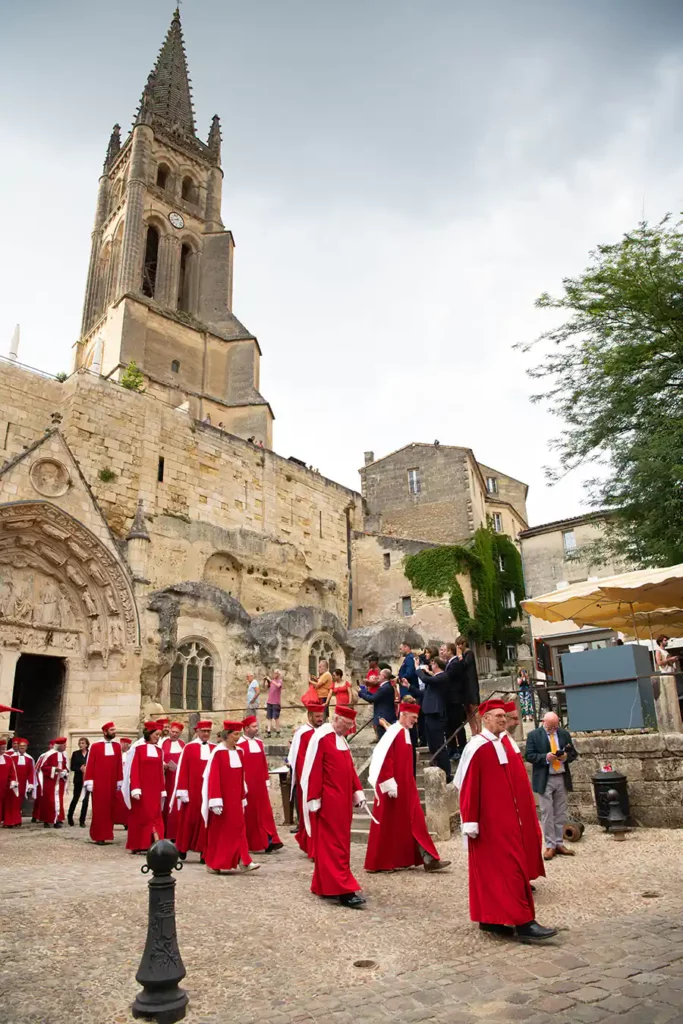Menu
Saint-Émilion is an authentic village where history, culture, and tradition blend to offer an unforgettable experience to all who discover it. Key moments punctuate the remarkable history of Saint-Émilion wines, affirming their reputation among connoisseurs worldwide.
The history of Saint-Émilion dates back to the 8th century when a hermit monk named Aemilianus settled in a cave in the “Cumbis” forest (the origin of “combes”: meaning cavern or cave), at the heart of what would later become the town of Saint-Émilion. His cave, transformed into a chapel, and his reputation for holiness attracted many followers who settled around him. Thus, the cave of Saint-Émilion was born! In homage to the hermit, the people carved, over several phases, into the rock just above his cave, creating what is now the monolithic church.

In 1154, Aquitaine came under English rule, but Saint-Émilion sought greater autonomy. Since the arrival of the Benedictine order, the religious influence of Saint-Émilion had been growing. The special status of jurisdiction was granted to Saint-Émilion in 1199 by John Lackland (son of Eleanor of Aquitaine) through the signing of the Charter of Falaise, which delegated economic, political, and judicial powers to local dignitaries and magistrates for the city’s administration and governance.

©JB Nadeau
SIGILLUM COM SI EMILIANI
“Sigillum Com Si Emiliani” is the Latin inscription that appears on the seal of the Jurade. It simply means “the seal of the commune of Saint-Émilion.” However, in the Middle Ages, the term “commune” had a very different meaning from today. It signified that the bourgeoisie of Saint Émilion could take oaths. In a society driven by allegiances, the power held by the Jurats in administering the Jurisdiction of Saint-Émilion was therefore significant
Dissolved during the Revolution, the Jurade was revived in 1948 by passionate winemakers who sought to preserve the traditions and values of Saint-Émilion wines.
With a brotherhood of 140 Jurats dressed in red robes trimmed with white ermine, the Jurade organizes induction ceremonies worldwide..
In the 20th century, aware of their exceptional heritage, winemakers regularly launched initiatives to maintain the vineyard’s excellence. After the creation of the Saint-Émilion AOC, the Jurade was reestablished, a revisable classification was put in place, the châteaux opened to the public, and measures for environmental respect and sustainable development became systematic. These demanding measures spurred winemakers in their quest for excellence, leading to UNESCO recognition on December 5, 1999. For the past 20 years, the Saint-Émilion vineyard has been listed as a UNESCO World Heritage Site for its cultural landscapes.